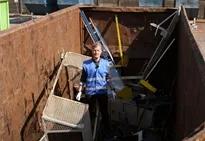Belgium is the fourth most productive country in the world, but our productivity growth has been sputtering. In this series we present five practical tips to boost productivity in the office and on the shop floor.
In the first part of this series we discussed the productivity of Belgian companies. The productivity growth in our country is not going too well. The limited productivity growth of the past years is mainly due to a small group of foreign subsidiaries. The biggest part of Belgian companies hardly contributes to the productivity growth.
In order to support Belgian companies with their productivity improvements, we collected a number of tips that we will publish in the coming weeks. These tips are deliberately not aimed at implementing advanced technologies, but on things that can be achieved with little effort.
Tip 16: Take a multi-moment snapshot
To measure is to know, but measuring is not always easy. In high-mix-low-volume environments, it is often difficult to properly measure productivity because of the diversity and lack of reliable standard times. Fortunately, you don’t need to know all the details to improve productivity. It often suffices to have a rough idea of the main problems you need to work on.
A multi-moment snapshot is a simple method to get an insight into the time spent by the employees without having to clock the exact times! To make a multi-moment snapshot, you walk past a workstation several times a day at an arbitrary time and tally what employees are doing. Typically, a limited number of activity categories are used, such as ‘Production’, ‘Setup’, ‘Breakdown’, ‘Material transport’, ‘No employee present’, ‘Consultation’ ... If you keep this up for a few weeks, you will soon have about 50 measuring points and a first picture of the typical time distribution will start to emerge. Such a simple measurement can quickly give you a good idea of where the greatest opportunities for improvement lie.
Some time ago, for example, in an assembly environment, we established that the mechanics were only present at the workstation for 30 percent of the time. The rest of the time was spent searching for materials or on their way to the warehouse. This was an eye-opener for the company’s management, which soon led to the decision to entrust a warehouse manager with the correct delivery of the material to the department, thereby greatly increasing the department’s productivity.
Tip 17: Take a look in the waste containers
Sirris’ scans of materials at companies show that the cost of raw materials represents on average 50 percent of the operating costs and that 18 percent of the materials are lost. Despite the great potential for savings, many large and small companies do not adequately succeed in reducing and valorising their waste streams. Waste is almost always considered to be no part of the core business. The powers and roles are therefore often divided between different departments: environmental coordinator (waste register, permit, emission control, etc.), production (process efficiency), procurement (raw material price, suppliers/contract waste processor), etc. Where the interactions between the parties involved become visible and measurable, beautiful, sustainable improvements can be achieved.
Some practical tips:
- Register the waste generated in your company on a daily or weekly basis and display the figures on the shop floor. This encourages them to make their own suggestions to reduce the amount of waste and prevent waste.
- The collection of residual waste is expensive. It is therefore worthwhile to examine the containers containing residual waste from time to time. What kind of waste does it contain in large quantities? Where do these fractions come from? Is it what you expected? What measures can you take to reduce residual waste? Discuss the results on the shop floor, think about how you can reduce residual waste and take the necessary measures.
- Joining all the figures and a few estimates is sometimes enough for a company to start working on it and take concrete actions. Sirris has developed a handy tool that enables rapid simulation of hidden costs associated with waste and by-products. More info about the tool can be found here.
Tip 18: Avoid multitasking: organise a ‘happy hour’
(Source picture: Pexels)
Production staff are often irritated when you ask them to interrupt the current order and switch to an urgent order. And they are right, the constant interruption of an ongoing activity is a productivity killer. This also applies to office processes, where it is not uncommon for employees to constantly engage in multitasking. Research has shown that the productivity loss due to multitasking can be as high as 40 percent.
Avoiding multitasking is not easy. It requires good agreements and a lot of discipline. Some companies plan time frames for concentrated work, agreeing that employees will not bother each other during these times. One Belgian production company has already come up with a particularly elegant solution for this. At the company, the employees of the design office were regularly interrupted by production employees having all kinds of questions. In order to group the questions at one specific time, the company encouraged employees to save up their questions for an afternoon question time that was invitingly called ‘happy hour’. For really urgent questions, employees were still allowed to consult the design office at any time. The introduction of that measure had two effects. Firstly, the measure was respected relatively well and the number of unwanted interruptions decreased. Secondly, there was also a decrease in the number of questions, because the employees managed to look up the information independently instead of conveniently walking to the design office. In this way, not only the productivity of the design office increased, but also that of the shop floor.
Tip 19: Organise your material deliveries
Can you imagine your postman, after delivering your letter, cycling back to the post office to pick up your neighbour's letter? Maybe not, but this is often how the supply of materials is organised within production companies. Forklift trucks drive from the warehouse to a workstation, drop off a pallet, and often drive back empty to the warehouse to pick up a next delivery.
Milk runs are often an elegant solution to this problem. In a milk run, the warehouse operator - just like a postman - drives a small train through the entire plant, and drops off the materials one by one at the workstations. All kinds of practical trains and various wagons are available for this purpose.
Tip 20: Use of translation software
(Source picture: Pexels)
A small country has a large international market. This is why we export almost everything we produce and purchase almost all materials from abroad. As a result, many documents (quotations, manuals, instructions, presentations, websites, etc.) have to be translated. Translators are expensive, translating it yourself is a time-consuming activity and the quality of translations often leaves much to be desired.
Thanks to ‘deep learning’, machine translation software has made a giant leap forward over the past two years. However, we note that few office workers are aware of the possibilities and therefore make too little use of them. Google Translate is perhaps the best-known translation service, but it is not yet the best. An amazingly good translation program is Deepl, which often also translates technical terms fairly well. A number of programs also allow complete documents to be uploaded, and automatically translated, while maintaining the formatting. Examples include: Onlinedoctranslator and Reverso.
Do you have any tips? Let us know so that we can share them and become more productive together!
Click here for an overview of the other parts in the series.




